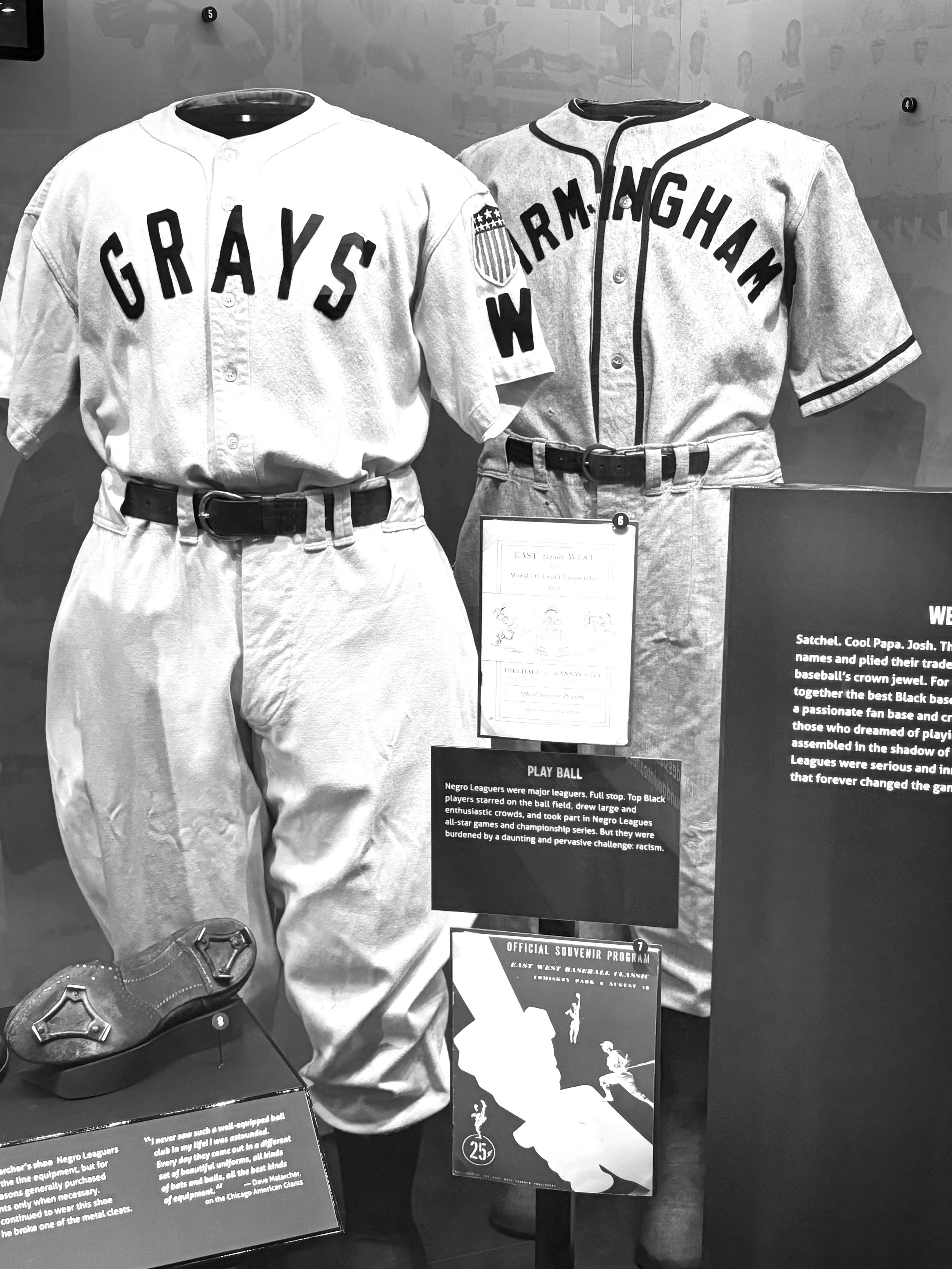History of Black Baseball in America
This is the continuation of Part One in a three-part series about Baseball in America and Buffalo by Michael J. Billoni, former Vice President/General Manager of the Buffalo Bisons; award-winning sportswriter for The Tonawanda News, Buffalo Courier-Express, and Rochester Democrat & Chronicle and author. He is president of Billoni Associates LLC (www.billoniassociates.com).
Part One appeared last week entitled “Baseball Hall of Fame’s Henry Aaron’s Connection to Buffalo, New York.” You can find the start of the story online at www.thebuffalocriterion.com. Part Two appears today: The National Baseball Hall of Fame’s newest exhibit, “The Souls of the Game: The Voices of Black Baseball.” Part Three appears on June 8: Inner City Baseball in Buf falo.
By Michael J. Billoni
Continued from last week.
COOPERSTOWN, NY—”It was just amazing,” Mrs. Billye Aaron said of the statue unveiling ceremony on May 23 inside the Hall of Fame Museum in Cooperstown, N.Y., with her silver hair glistening in the late afternoon sunlight. “It is a feeling one has difficulty describing. I am so, so proud of the fact this has come abo. and now Henry will be here, in the Hall of Fame Museum, for everyone to see forever.
“I was so glad our family members and friends from Atlanta were here to share this wonderful experience with us,” she added.
Aaron retired in 1976 after playing 21 seasons for the Milwaukee and Atlanta Braves in the National League and the Milwaukee Brewers in the American League. At the time of his retirement, Aaron held most of the game’s key career power-hitting records, including the most fa mous one, breaking Babe Ruth’s home run record of 714 on April 8, 1974, when he hit number 715 in Atlanta against the Los Angeles Dodgers left-hander Al Dowling. Aaron finished his career with 755 home runs, a record that stood for 33 years until Barry Bonds eclipsed it during the steroid era.
Reflecting on his post-playing career, Mrs. Aaron said her husband was most fond of the Chasing the Dream Foundation they founded to inspire young people to develop their skills and pursue their passions. It annu ally presents Dream Chaser Scholarships to students with limited financial capabilities from all over the country. That point was echoed by his first-born son, Henry Aaron, Jr., whom we also presented with a plaque.
“As much as my dad was proud of his baseball accomplishments, he was extremely proud he was able to put 77 students through college with Dream Chaser scholar ships from the foundation,” Aaron Jr. said proudly. “Edu cation was particularly important to him. Dad would al ways tell me it was much more important to be a better person than a better baseball player.”
Josh Rawitch, President, National Baseball Hall of Fame and Museum and an executive with the Dodgers and Arizona Diamondbacks for 25 years before that, knew Aaron well and was most proud to see his statue un veiled in the hall on the same weekend as The Souls of the Game exhibit opens and the former Negro League’s East vs. West all-star game, was played Saturday after noon inside Doubleday Park.
“The statue unveiling was an unbelievable experience,” Rawitch said after receiving a copy of our book, The Seasons of Buffalo Baseball 1857-2020, and plaque, entitled “Henry Aaron’s Connection with Buffalo, N.Y.” for the Hall of Fame Museum. “To have Billye here with so many family members were extremely special. You could see how touched Billye was to look up at him and realize what he had done both on and off the field and how he is going to be part of this Hall of Fame forever.”
Being a soft toss away from fellow Negro American League star, Buck O’Neil on the museum’s first floor to greet all guests, Rawitch said, “Those two tell the story of Black baseball quite well.”
On the museum’s second floor in the Yawkey Gallery, The Souls of the Game exhibit covers the story of black baseball, the Negro Leagues era, the complexities of re integration, Jackie Robinson beyond him breaking the color barrier, post-reintegration progress and retrogress, calls for change in today’s game while celebrating the achievements of so many Black men and women in and around the game. Jane Forbes Clark, the National Baseball Hall of Fame, and Museum’s Chairperson of the Board, oversaw an initiative that be gan five years ago with a vision to highlight the stories of Black Baseball. She calls the opening weekend “The beginning of a great new chapter.”
The extensive committee, comprised of Hall of Fame members, former major league baseball players, curator consultants, historians, and members of the baseball family, did an outstanding job of telling this story, which dates to the 1800’s. The committee made sure the exhibit is part of a museum-wide enrichment of Black baseball stories that will provide a more inclusive look at the game, shine a light on and correct misconceptions about Black baseball, and provide an authentic, cohesive narrative of Black baseball history.
“Henry Aaron is a player whose off-the-field legacy has only grown more powerful since his incredible playing career ended almost 50 years ago,” Mrs. Clark said. The extensive committee, comprised of Hall of Fame members, former major league baseball players, curator consultants, historians, and members of the baseball family, did an outstanding job of telling this story, which dates to the 1800’s. The committee made sure the exhibit is part of a museum-wide enrichment of Black baseball stories that will provide a more inclusive look at the game, shine a light on and correct misconceptions about Black baseball, and provide an authentic, cohesive narrative of Black baseball history



